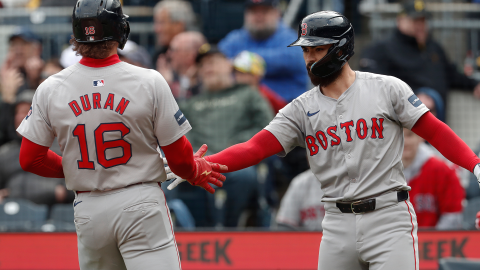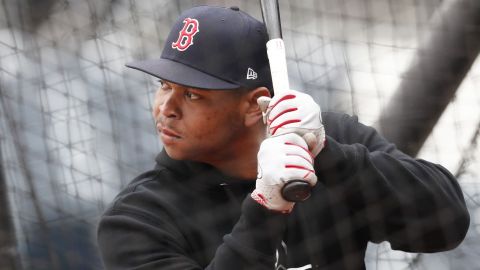Josh Beckett is no enigma. He is a definitive competitor who throws hard and cares even harder, as evidenced by his occasional post-start diatribes. Nothing is left to the imagination.
His results, however, suggest something altogether different. Beckett, particularly in his five years in Boston, has been as up and down as a starting pitcher with that kind of talent can be. His ERAs from season to season read like a line graph of a mountain range’s elevations, from peak to valley.
Such inconsistency might not mean much to Red Sox fans if not for the $68 million extension the club gave Beckett early in the 2010 season. When he is right, as he has been for the Sox in 2007 and 2009, he’ll be more than worth the money. When he struggles, as was the case in 2006 and 2010 (and parts of 2008), he will be a target for criticism. So it goes with heavy duty contracts.
If you tend to get caught up in mystical patterns and fate and all that kind of stuff, you might be convinced that this will be a bounce-back season for Beckett; he has a 3.57 ERA in odd years with the Red Sox, a 4.87 mark in evens. However, a deeper look at the numbers might help form a more definitive assessment. While one view might cause concern, another should breed optimism.
Let’s first start with the bad news.
While injuries likely had plenty to do with it, Beckett’s velocity across the board dipped rather dramatically in 2010. His fastball, curveball and changeup were each thrown with less speed than in any year in a Red Sox uniform. His cutter, which he employed a career-high 15.2 percent of the time, was its slowest since 2006, when he almost never used it. Each of the dips in average velocity was at least 0.8 mph, no minor development when hundredths of a second in a hitter’s reaction can be the difference between a line drive on the nose and a weak grounder to first.
Now, Beckett may be transitioning into a different kind of pitcher. He’ll be 31 next May and like countless hard-throwers before him he might need to scale back and learn how to get guys out in ways other than throwing 95 mph on the black (Beckett threw his fastball just 55.2 percent of the time in 2010, easily the lowest mark of his career). But it is worth noting and keeping an eye on the fact that his worst season coincided with this reduction in pitch speed, whether injury-related or not.
Remember, though, there is good news. Not only was Beckett able to finish with a somewhat solid stretch run (4.17 ERA over final seven starts, lasting at least six innings in each), he can point to a few odd circumstances as one cause for the year-long malaise.
To start with, let’s look at the BABIP (batting average on balls in play). This figure, which tends to normalize over time, was a lofty .349 for Beckett last year, far and away the highest mark he has ever seen. However, Beckett’s line drive and fly ball percentages were actually lower than his career norms while his groundball rate was up, which makes one thing very clear to those analyzing Beckett’s difficult campaign — balls were finding holes, and finding them at a rapid rate. Lending support to this theory is the fact that 8.2 percent of the hits off Beckett were infield hits, easily a career high and two percentage points higher than his average.
Beckett did have a higher walk rate and a lower strikeout rate than he is used to, but not after he returned from his back injury in July. His 3.16 strikeout-to-walk ratio over those final 13 outings is better than his career mark, and it included a remarkable run in which he fanned 50 while walking just 10.
That span alone, which saw Beckett begin to regain a mastery of pitches other than his more ordinary heater, suggests as much as anything that he had finally, after several months of trying to do so through pain, found a rhythm with a more complete arsenal.
Beckett’s ability to regain the form that has seen him dominate in the past may depend on his ability to set aside that form, and reinvent himself a bit. He will always be an aggressive hurler with the ability to blow people away, but it is more evident that finding other ways to get outs is key to Beckett’s success, and the way he finished 2010 suggests he has a chance to do so in 2011.
Each day of November, we will explore a different issue facing the Red Sox this offseason.
Nov. 7: Will Dustin Pedroia and Kevin Youkilis be fully healed for the start of next season?



